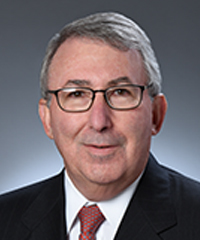Rheumatology
Rheumatoid Arthritis
Guidelines Edge More Egalitarian on First-Line Biologic Choice
Overview
A more thoughtful, egalitarian approach to the selection of therapy for moderate to severe rheumatoid arthritis (RA) after primary anti–tumor necrosis factor (TNF) failure is developing, as reflected in recent updates to the American College of Rheumatology (ACR) and the European League Against Rheumatism (EULAR) recommendations. Treatment guidelines recommend the use of different mechanism of action therapies earlier in the treatment paradigm. Experts note a great comfort with the habitual use of anti-TNF therapy in patients who respond inadequately to methotrexate, but they also point to the advantages of non-TNF agents.
Q: How would you describe the current beliefs and prescribing behaviors among rheumatologists with respect to earlier use of non-TNF biologic therapies?
Leonard H. Calabrese, DO
|
|
“There is still a primacy of anti-TNF prescribing among rheumatologists early on, although that is starting to change.”
There is still a primacy of anti-TNF prescribing among rheumatologists early on, although that is starting to change. One has to appreciate that TNF inhibitors have been given to about 3 million people across indications since they have been around. There is a great comfort with anti-TNFs—we are very risk-averse as a profession, and that drives a lot of the decision making. Yet, the guidelines have now endorsed a much more egalitarian approach among biologics as first choice.
Alan L. Epstein, MD
|
|
“I think that if you look at prescribing these days, you may see the beginning of what appears to be a more thoughtful approach.”
I think that if you look at studies of clinician prescribing across the United States, in particular, there is this reliance on the initiation of anti-TNF agents first-line after a conventional synthetic disease-modifying antirheumatic drug (csDMARD). And I think that most would agree, if you asked them why they did that, that it’s really a question of habit, but also—as Dr Calabrese just alluded to—comfort. We’re comfortable with these agents because we have used them for a long time. I think that, if you examine the data on the other drugs (certainly there are many clinical studies in many different populations with many different newer drugs), it’s fair to say that the newer agents are comparable. In other words, if a new drug were to emerge that achieved an ACR 20 of 100%, I think that we would all be reaching for that drug much more quickly, but that clearly does not exist. Anti-TNF agents have been around for about 20 years, rituximab and abatacept came around in 2006 and 2007, respectively, and interleukin-6 (IL-6) inhibition with tocilizumab was approved by the FDA in 2010 so they’ve been around for a long time. But I think that people just became comfortable with the anti-TNF agents, and they tend to cycle through them. However, I think that if you look at prescribing these days, you may see the beginning of what appears to be a more thoughtful approach. For instance, anti-TNF drugs are still the first-line biologic agent, but when the patient has an inadequate response, a more thoughtful approach is developing toward the use of therapies with distinct, non-TNF mechanisms of action—the argument, perhaps, being that, in a particular individual with RA, TNF is not as important as it might be in another person.
Stanley B. Cohen, MD
|
|
“In the most recent iterations of these guidelines, the recommendation is to essentially monitor disease activity frequently and closely, to be aggressive in treatment, and to change treatment if you are unable to achieve low disease activity or remission. Clearly, any of the biologics are effective.”
I think that most of us will go with a TNF inhibitor as a first biologic, but that is really because they were the first therapies available, and they’ve had that longest observational period. The clinical trial data show that, essentially, any biologic you choose after the initial csDMARD is effective in patients with moderate to severe disease. Clearly, there are extensive data with tocilizumab, abatacept, and rituximab, and now we have sarilumab, another IL-6 inhibitor. There are also very good data with tofacitinib and some other janus kinase (JAK) inhibitors that will soon be on the market. So, I don’t think that the basic paradigm has really changed, and in the most recent iterations of these guidelines, the recommendation is to essentially monitor disease activity frequently and closely, to be aggressive in treatment, and to change treatment if you are unable to achieve low disease activity or remission. Clearly, any of the biologics are effective.
Daniel E. Furst, MD
|
|
I am in agreement with my colleagues here. There are several targets that have been very effective, and mechanisms that include TNF inhibition, but also IL-6 receptor inhibition, JAK inhibition, B-cell depletion, and T-cell co-stimulation blockade, just to name a few.
References
Burmester GR, Lin Y, Patel R, et al. Efficacy and safety of sarilumab monotherapy versus adalimumab monotherapy for the treatment of patients with active rheumatoid arthritis (MONARCH): a randomised, double-blind, parallel-group phase III trial. Ann Rheum Dis. 2017;76(5):840-847.
Firestein GS. The disease formerly known as rheumatoid arthritis. Arthritis Res Ther. 2014:16(3):114.
Genovese MC, Fleischmann R, Kivitz AJ, et al. Sarilumab plus methotrexate in patients with active rheumatoid arthritis and inadequate response to methotrexate: results of a phase III study. Arthritis Rheumatol. 2015;67(6):1424-1437.
Rein P, Mueller RB. Treatment with biologicals in rheumatoid arthritis: an overview. Rheumatol Ther. 2017;4(2):247-261.
Singh JA, Saag KG, Bridges SL Jr, et al. 2015 American College of Rheumatology Guideline for the Treatment of Rheumatoid Arthritis. Arthritis Rheumatol. 2016;68(1):1-26.
Smolen JS, Landewé R, Bijlsma J, et al. EULAR recommendations for the management of rheumatoid arthritis with synthetic and biological disease-modifying antirheumatic drugs: 2016 update. Ann Rheum Dis. 2017;76(6):960-977.














